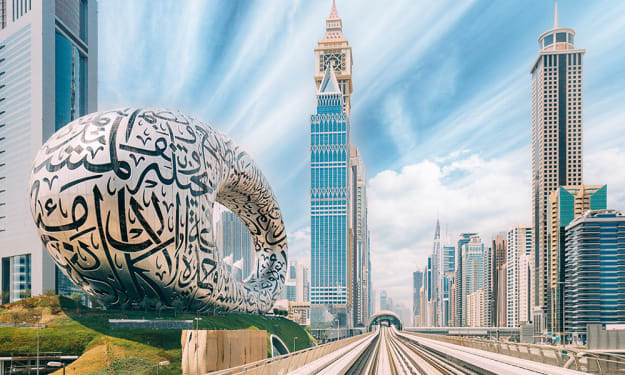10 Facts About The Seven Seas
Here are some facts you may not know about the Seven Seas.

1. Historical and cultural variation
The expression "Seven Seas" has been utilized in different societies and verifiable periods to mean various gatherings of oceans or seas. In old times, it was habitually utilized as an idyllic or figurative articulation enveloping every one of the world's seas. Here is a concise outline of the verifiable and social variety encompassing the idea of the Seven Seas:
- Old Greek and Roman Periods: The thought of the Seven Seas can be traced back to antiquated Greece and Rome. During this time, the term alluded to the various waterways known to these developments, including the Mediterranean Ocean, Dark Ocean, Red Ocean, Adriatic Ocean, Caspian Ocean, Persian Bay, and Indian Sea.
- Islamic Brilliant Age: In the Islamic Brilliant Age, Middle Eastern and Persian researchers developed the idea of the Seven Seas. They recognized different waterways critical for the exchange and investigation of the Islamic world, like the Mediterranean Ocean, Dark Ocean, Caspian Ocean, Bedouin Ocean, Persian Bay, Red Ocean, and Indian Sea.
- Middle-age Europe: In archaic Europe, the comprehension of the Seven Seas developed to incorporate the Icy Sea, Atlantic Sea, Indian Sea, Mediterranean Ocean, Caribbean Ocean, Bay of Mexico, and Pacific Sea. These oceans held incredible importance for European investigation, exchange, and colonization.
- Chinese and East Asian Understanding: In Chinese history and geology, the idea of the Seven Seas commonly alluded to provincial waterways, underscoring their significance in sea exchange and route. Oceans like the East China Sea, South China Sea, and Yellow Sea were among those remembered for this understanding.
- Present-day Use: In current times, the expression "Seven Seas" is not generally utilized stringently from a geological perspective. All things considered, it has procured a more representative and graceful significance, addressing every one of the world's seas and significant waterways by and large.
- Nautical Use: In nautical wording, the maxim "cruising the seven seas" is frequently utilized figuratively to mean voyaging from one side of the planet to the other via the ocean.
2. Medieval Arabic Origins
The most established known notice of the "Seven Seas" can be traced back to middle-age Arabic writing, in which the articulation was utilized to portray a gathering of interconnected waterways, enveloping the Mediterranean Ocean, Red Ocean, Bedouin Ocean, Persian Bay, and others.
3. European Interpretation
During the Middle Ages in Europe, the Seven Seas were usually characterized as the Icy Sea, North Atlantic Sea, South Atlantic Sea, Indian Sea, North Pacific Sea, South Pacific Sea, and Southern Sea. This understanding was more centered around topographical viewpoints than figurative significance. Even though there might be slight variations in translation, coming up next is an ordinary European comprehension of the Seven Seas:
- Mediterranean Ocean: This ocean held extraordinary importance as the main in the grouping because of its verifiable significance as a significant shipping lane and focus of social trade.
- Dark Ocean: Associated with the Mediterranean using the Bosporus Waterway, the Dark Ocean was likewise viewed as one of the Seven Seas. It assumed an essential role in the exchange and oceanic investigation.
- Red Ocean: Filling in as an association between the Mediterranean and the Indian Sea through the Suez Trench, the Red Ocean was another critical shipping lane, giving admittance to East Africa and then some.
- Persian Bay: This ocean assumed an imperative role in connecting Europe to the Indian subcontinent and the Middle East, working with exchange and social trade.
- Middle Eastern Ocean: Arranged between the Indian subcontinent and the Bedouin Landmass, the Middle Eastern Ocean was a significant course for European boats venturing out to and from India and Southeast Asia.
- Cove of Bengal: Situated toward the east of India, this ocean was likewise vital for exchange and investigation, filling in as a connection between Europe and Southeast Asia.
- South China Sea: The South China Sea denotes the eastern limit of the European translation of the Seven Seas. It was a locale of huge exchange and social cooperation with Asian developments.
4. Exploration and Trade
In the period of investigation, European explorers used the expression "Seven Seas" to assign the essential seas and oceans they ran over while laying out overall shipping lanes.
5. Chinese nautical traditions
In Chinese oceanic custom, the expression "Seven Seas" meant seven critical sea and beachfront regions that Chinese sailors regularly visited during their excursions.
6. Piracy and Adventure
The expression "cruising the Seven Seas" was ordinarily utilized in privateer stories and experience stories to convey a feeling of investigation and danger on the untamed waters. Here are a few facts about robbery and experience on the Seven Seas:
- Robbery on the Seven Seas: Theft alludes to demonstrations of burglary, viciousness, or other crimes completed by privateers adrift. Privateers are regular people or groups that work beyond the law. All through the sixteenth to nineteenth centuries, privateers worked in different areas of the planet, including the Caribbean, Mediterranean, and Indian Seas. Famous privateers like Blackbeard, Skipper Kidd, and Calico Jack are notable figures related to robbery on the Seven Seas.
- Experience and Investigation: The Seven Seas have forever been connected to the soul of experience and investigation. Since the beginning of time, fearless wayfarers have set out on unsafe excursions across these oceans to find new terrains, shipping lanes, and societies. Christopher Columbus, Vasco da Gama, Ferdinand Magellan, and other wayfarers embraced deceptive journeys to explore these waters and make historic revelations. Their experiences have motivated incalculable stories and keep dazzling minds.
- Scholarly and Social Impact: The idea of robbery and experience on the Seven Seas essentially affects writing and mainstream society. Exemplary books, for example, Robert Louis Stevenson's "Fortune Island" and Jules Verne's "20,000 Associations Under the Ocean," have an impact on molding the impression of the sea experience. These accounts frequently include missions for buried treasures, trying getaways, and fights against normal components and different dangers.
- Present-day Translations: While robbery as a crime has been extraordinarily reduced as of late because of worldwide endeavors to battle it, the charm of experience on the Seven Seas persists. Current swashbuckler pioneers leave on excursions of disclosure, whether through logical examination, remote ocean investigation, or solo cruising campaigns. The call of the untamed ocean and the obscure remaining areas of strength for parts
- The travel industry and Diversion: Experience on the Seven Seas has additionally impacted the travel industry and sporting industry. Voyage ships offer voyagers the opportunity to investigate various regions of the planet while getting a charge out of lavish facilities and diversion. Experiences in the travel industry, including cruising campaigns, scuba diving, and experiences with marine untamed life, permit individuals to encounter a sample of sea life while profiting from the well-being and comfort of coordinated visits.
7. Modern Interpretation
In contemporary times, the expression is regularly utilized more loosely and figuratively to mean the sum of the world's seas overall, without an exact outline of the specific seas enveloped.
8. Lack of Consensus
The shortfall of a generally acknowledged gathering of oceans, due to contrasting verifiable and social points of view, means that there is no agreement on what comprises the Seven Seas.
9. Nautical Charts
Verifiable sea maps incidentally depicted the "Seven Seas" as interlinked water entries or explicit regions of the sea, mirroring the route information for that period. These guides normally highlight the accompanying subtleties:
- Water Profundities: Nautical graphs show water profundities utilizing form lines, supporting sailors in grasping submerged geography and staying away from shallow locales.
- Navigational Guides: Diagrams demonstrate the places of beacons, floats, reference points, and different guides that help ships explore safe courses.
- Milestones: Unmistakable beachfront or coastal tourist spots are often set apart on nautical diagrams to help route and give visual references.
- Unsafe Regions: Outlines feature potential perils like reefs, rocks, wrecks, and other submerged deterrents that might endanger the route.
- Ports and Harbors: Fundamental port offices, docks, and harbors are recognized on the graphs, alongside relevant data about accessible administrations and conveniences.
- Flowing Data: Certain nautical diagrams supply flowing information, including flowing reaches and flows, which are indispensable for arranging safe routes.
-Graph Images and Shortened Forms: Nautical diagrams use explicit images and contractions to pass on data proficiently. Sailors should know about these images to decipher the graphs precisely.
- Scale and Direction: Nautical diagrams normally contain a compass rose to demonstrate the graph's direction and a scale bar to work with exact distance assessments.
10. Symbolic Meaning
The expression has acquired emblematic significance in writing, craftsmanship, and mainstream society as a depiction of investigation, experience, and the limitlessness of the world's seas. While the particular representative implications might contrast, the following are a couple of understandings that have been connected to the possibility of the seven seas:
- Worldwide Solidarity and Network: A few understandings view the seven seas as an image of the interconnectedness of the world's seas and the solidarity of all countries and societies across the globe. This understanding features the thought that, despite geological distances, mankind shares a typical bond through the broad organization of oceans and seas.
- Experience and Investigation: The idea of the seven seas can likewise summon a feeling of experience and investigation. Previously, pilgrims and pilots utilized this term to portray their excursions across far-off seas and unfamiliar domains, accentuating the boldness and interest expected in wandering into the unexplored world.
- Supernatural quality and folklore: The expression "cruising the seven seas" has likewise been related to an atmosphere of enchantment and folklore. In different societies, the number seven holds importance as a hallowed or otherworldly number. The idea of the seven seas might take advantage of this imagery, recommending that the seas contain privileged insights and secrets ready to be found.
- Exchange and Business: By and large, the seven seas were often viewed as vital shipping lanes. The emblematic importance of the seven seas may in this way be connected to financial flourishing, as they worked with the trading of products, societies, and thoughts among various areas of the world. Difficulties and Preliminaries: Cruising the seven seas in the past introduced various difficulties, including deceptive waters, a flighty climate, and obscure risks. The expression could represent the preliminary steps and challenges one should conquer while chasing after their objectives or dreams.
- Social Variety: The expression "seven seas" can be deciphered as a portrayal of the different societies and civic establishments spread across the world. Every ocean should be visible as a particular social locale, and exploring these oceans could address the trade and cooperation of various social practices.
- Profound Excursions: In specific otherworldly or philosophical settings, the idea of the seven seas could represent an excursion of self-disclosure or illumination. The oceans could address phases of self-awareness and change, likened to navigating various periods of life or cognizance.
About the Creator
Enjoyed the story? Support the Creator.
Subscribe for free to receive all their stories in your feed. You could also pledge your support or give them a one-off tip, letting them know you appreciate their work.





Comments
Lexi is not accepting comments at the moment
Want to show your support? Send them a one-off tip.